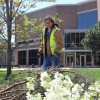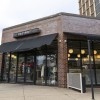

Why aren’t all neighborhoods ‘walkable’?
Recent analysis shows walkable urban neighborhoods are high in demand, but low on supply.
Is your neighborhood or town walkable? When Reset asked that question on Twitter, most people said yes — with room for improvement. Plus, a recent report shows that the demand for walkable neighborhoods far outstrips the supply. That, combined with today’s housing crisis, emphasizes the need for more mixed-income and well-connected real estate.
Reset digs into what makes communities walkable, who is left out when a neighborhood isn’t, and how urban planning could make it easier to get around by foot.
GUESTS: Courtney Cobbs, co-founder of Better Streets Chicago
Sam Kling, a fellow and director of global cities research at the Chicago Council on Global Affairs
Jose Manuel Almanza, director of advocacy and movement building for Equiticity
More From
Reset with Sasha-Ann Simons


Why aren’t all neighborhoods ‘walkable’?
Recent analysis shows walkable urban neighborhoods are high in demand, but low on supply.
Is your neighborhood or town walkable? When Reset asked that question on Twitter, most people said yes — with room for improvement. Plus, a recent report shows that the demand for walkable neighborhoods far outstrips the supply. That, combined with today’s housing crisis, emphasizes the need for more mixed-income and well-connected real estate.
Reset digs into what makes communities walkable, who is left out when a neighborhood isn’t, and how urban planning could make it easier to get around by foot.
GUESTS: Courtney Cobbs, co-founder of Better Streets Chicago
Sam Kling, a fellow and director of global cities research at the Chicago Council on Global Affairs
Jose Manuel Almanza, director of advocacy and movement building for Equiticity










